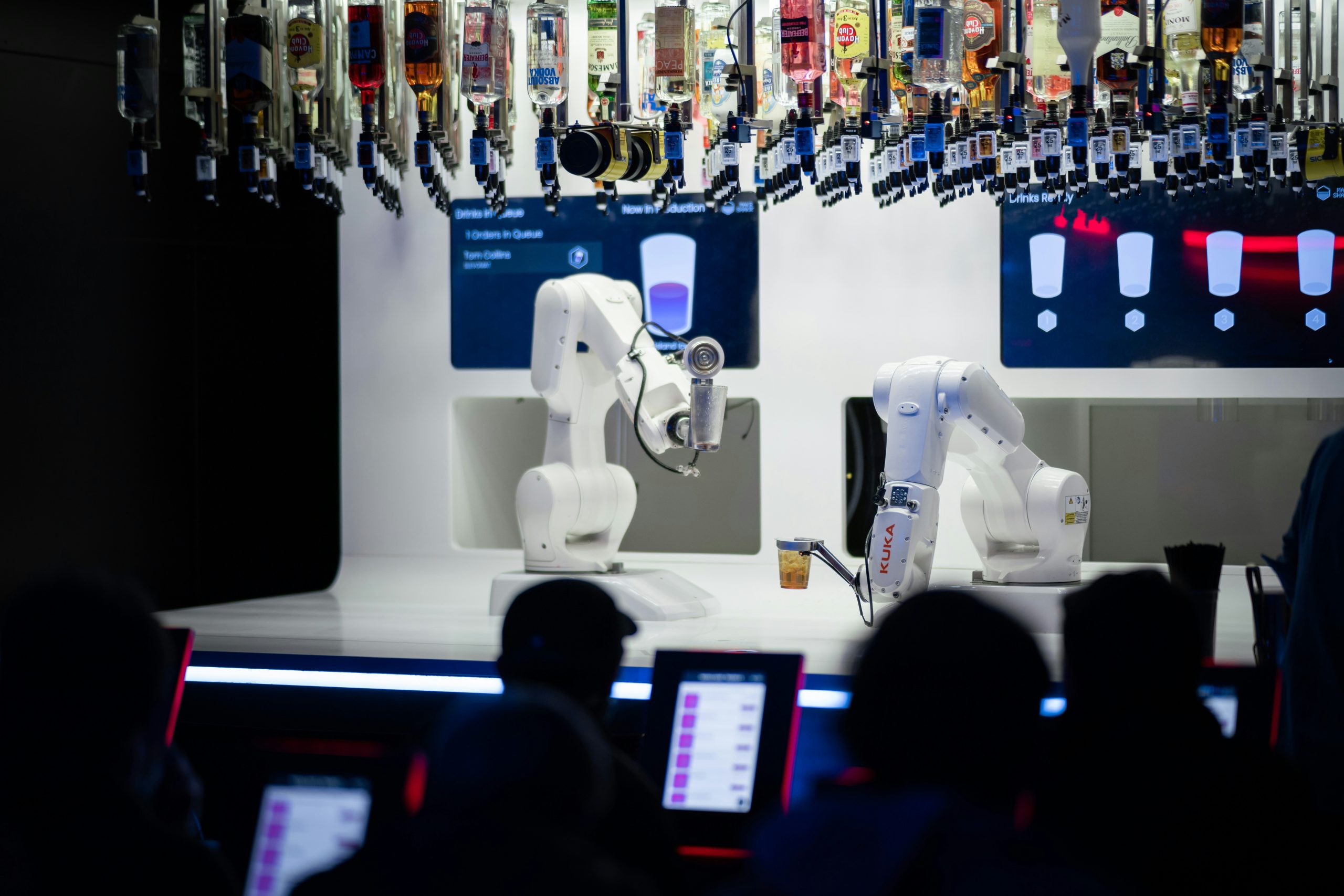Digital twins in manufacturing: enhancing efficiency and precision

The manufacturing industry is undergoing a transformation, driven by advancements in digital technology. At the forefront of this change is the concept of the digital twin, a virtual model that mirrors a physical system or process. Digital twins are revolutionizing how products are designed, produced, and maintained, offering a new level of efficiency and precision. By harnessing real-time data, digital twin technology provides insights that enable better decision-making and predictive maintenance, leading to improved product quality and system performance.
In this article, we’ll delve into the world of digital twins in manufacturing, exploring the benefits they offer and the technology that powers them. We’ll discuss their influence on design and development, their role in real-time data analytics, and how they are shaping the future of manufacturing. Whether you are a stakeholder in the industry or simply curious about this technological evolution, understanding digital twins is key to appreciating the future of manufacturing.
Dans le meme genre : Visual art: creating a fantastic universe with MyimageGPT
The concept of digital twins
A digital twin is a bridge between the physical and digital worlds. It is a virtual representation of a physical object, system, or process that is used to analyze and optimize the performance of its physical counterpart. By leveraging big data, artificial intelligence, and the internet of things (IoT), digital twins can simulate real-world conditions and predict outcomes, enabling manufacturers to make informed decisions.
The concept of the digital twin is not entirely new. The idea has been around for several years, but recent advances in technology have made it more accessible and functional for a wide range of industries. The convergence of virtual and physical spaces through digital twins has the potential to redefine manufacturing processes, from the initial design phase to the end of a product’s lifecycle.
A découvrir également : Why use a chatbot in business ?
Benefits of digital twins in manufacturing
Digital twins offer an array of benefits that can significantly enhance manufacturing processes. They provide a high-fidelity model of a physical system that can be used for various purposes, from troubleshooting to optimizing production lines. Here are some of the most significant advantages of implementing digital twins in manufacturing:
Streamlined design and development
Digital twins allow manufacturers to create and test product designs in a virtual environment before any physical prototyping begins. This can save significant time and resources by identifying potential issues early in the design process. By simulating how a product will perform, companies can make adjustments to the design to ensure optimal operation and avoid costly mistakes down the line.
Enhanced production efficiency
During the production phase, digital twins can monitor the manufacturing process in real-time, providing insights into performance and identifying any deviations from the expected output. This real-time monitoring enables quick adjustments to maintain efficiency and reduce downtime. By preemptively spotting problems, digital twins can also minimize waste and improve overall productivity.
Predictive maintenance and quality control
Digital twins can predict when equipment will need maintenance before it fails. This predictive maintenance approach reduces unplanned downtime and extends the life of machinery. Moreover, digital twins help maintain product quality by continuously analyzing production data to ensure that the final product meets the required specifications and standards.
Informed decision making
One of the most powerful aspects of digital twins is their ability to aid in decision-making. By providing a detailed and accurate representation of manufacturing operations, digital twins offer insights that can lead to better strategic choices. Manufacturers can simulate different scenarios and outcomes, leading to more efficient operations and reduced risks.
Digital twin technology
The backbone of digital twin technology is data. Digital twins rely on a constant flow of data from sensors and other sources that track various aspects of the manufacturing process. This data is then processed and analyzed using advanced algorithms and artificial intelligence to create a real-time model of the physical system.
Integration of iot and ai
The integration of IoT devices is crucial for capturing the necessary data to create and maintain digital twins. Sensors gather information on everything from machine performance to environmental conditions, feeding this data into the digital twin for analysis. Artificial intelligence plays a pivotal role in interpreting this data, learning from it, and making predictions or recommendations based on the insights gained.
Big data analytics
With the vast amount of data generated in manufacturing, big data analytics are essential to filter and decipher the information that digital twins require. These analytics can identify patterns and correlations that might not be evident through traditional methods, offering a more nuanced understanding of the manufacturing process.
Virtual and augmented reality
Virtual and augmented reality technologies can enhance the capabilities of digital twins by allowing users to interact with the virtual model in a more immersive way. This can be especially beneficial for training purposes or for visualizing how changes to the design or process may impact the physical system.
Implementing digital twins in manufacturing
Implementing digital twins in manufacturing requires a strategic approach that takes into consideration the unique needs and challenges of the production environment. From selecting the right technology to ensuring data security, several factors must be addressed to successfully adopt digital twin technology.
Selecting the right platform
Choosing the appropriate digital twin platform is crucial. The platform should be capable of handling the specific requirements of your manufacturing processes, including the ability to integrate with existing systems and support the scale of your operations.
Data security and privacy
As digital twins involve handling a large amount of sensitive data, it’s critical to ensure that robust security measures are in place to protect this data from unauthorized access or breaches. Privacy concerns should also be considered, particularly when dealing with data that could identify individual employees or proprietary processes.
Employee training and adoption
For digital twins to be effective, it’s important that employees understand how to use the technology and interpret the data it provides. Adequate training is essential to ensure that the workforce can adapt to the new systems and fully leverage the benefits of digital twins.
The future of digital twins in manufacturing
Digital twins are expected to become increasingly prevalent in manufacturing as more companies recognize their potential to enhance efficiency and precision. As the technology continues to evolve, we will likely see even greater integration of digital twins across various stages of the manufacturing process.
Continuous improvement and innovation
Digital twins enable a cycle of continuous improvement, where real-time feedback from the virtual model informs changes to the physical system. This iterative process fosters innovation and can lead to breakthroughs in product design and production methods.
Customization and personalization
The detailed insights provided by digital twins can facilitate the customization of products to meet specific consumer demands. Manufacturers can tweak designs and processes to create personalized products without significant increases in cost or production time.
Sustainability and environmental impact
Digital twins can also contribute to sustainability efforts by optimizing resource use and reducing waste in manufacturing. By closely monitoring and adjusting processes, companies can minimize their environmental impact while maintaining high-quality production standards.
Conclusion
Digital twins represent a significant advancement in manufacturing technology, offering the ability to enhance efficiency and precision in production processes. By creating a virtual counterpart to the physical world, manufacturers can simulate, analyze, and refine their operations in ways that were previously impossible. This technology promotes informed decision-making, predictive maintenance, and continuous innovation, leading to improved product quality and system performance.
As the manufacturing industry continues to embrace digital twins, we can expect to see greater integration of this technology, leading to more agile, efficient, and sustainable production systems. For those in the industry, staying abreast of digital twin developments will be crucial to maintaining a competitive edge. And for the wider audience, understanding the impact of digital twins is key to appreciating how technology is reshaping the world of manufacturing. With each virtual model, the physical reality of production becomes more precise, more efficient, and ready for the challenges of tomorrow.
